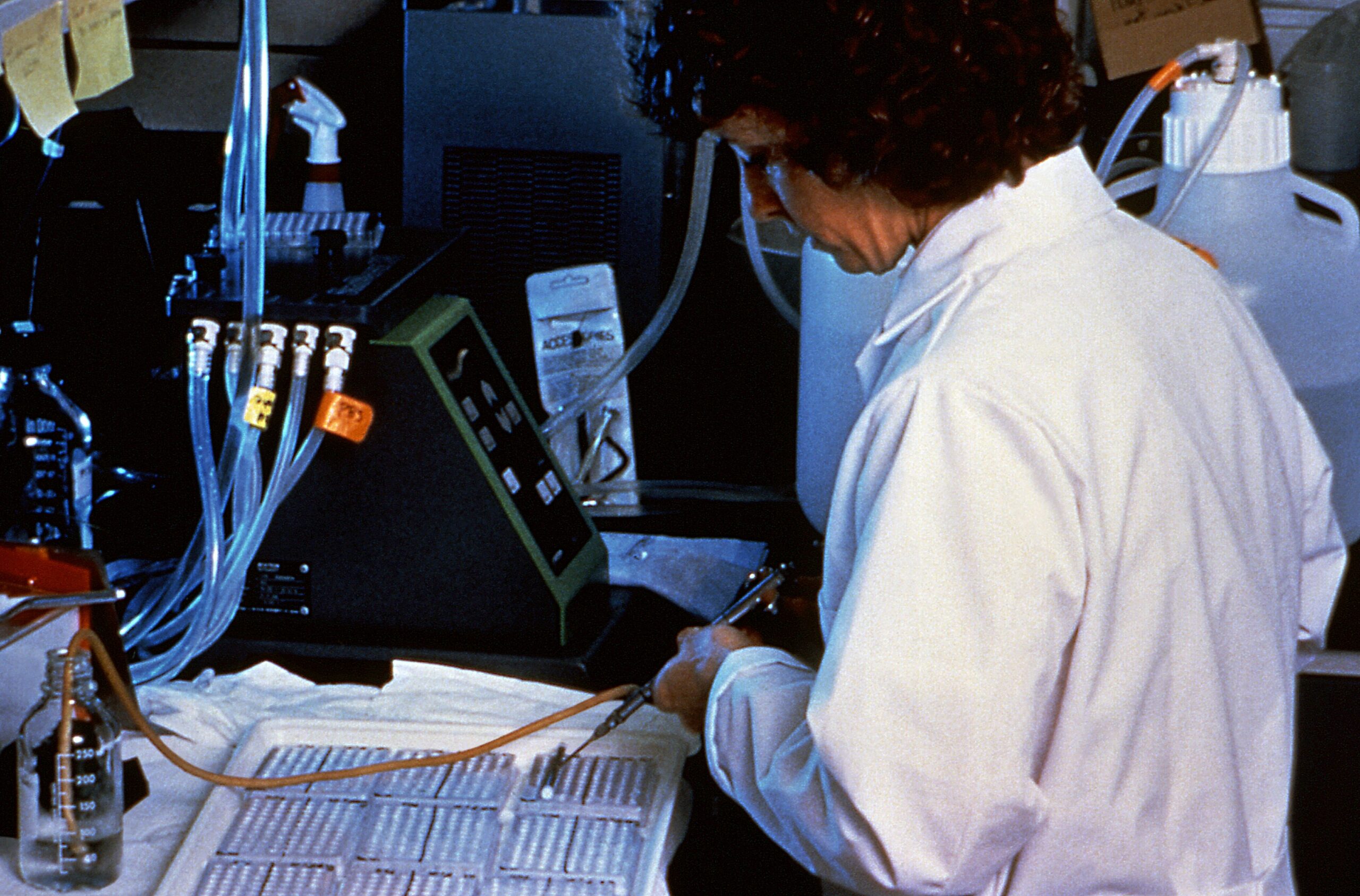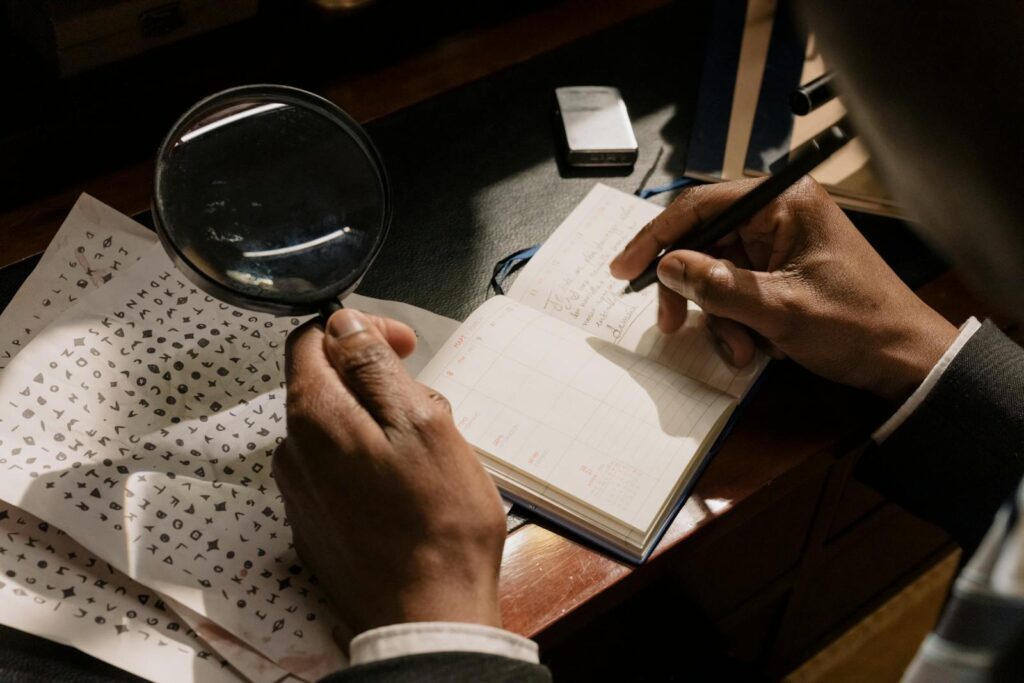Now Reading: Revealing the Invisible: The Transformative Role of ELISA in Modern Forensic Investigations
-
01
Revealing the Invisible: The Transformative Role of ELISA in Modern Forensic Investigations

Revealing the Invisible: The Transformative Role of ELISA in Modern Forensic Investigations
In forensic science, many critical pieces of evidence are invisible to the naked eye, including minute blood or saliva stains, trace amounts of toxins or drugs, the species origin of biological fluids, or the presence of specific antigens that can link individuals to crime scenes. The enzyme-linked immunosorbent assay (ELISA) has emerged as a powerful tool for revealing these hidden clues. This article surveys how ELISA is used in modern forensic investigations: its principles, types, strengths and limitations; its application in identifying body fluids, blood group antigens, drugs of abuse and toxins; and recent advances and future directions (e.g. improved antibodies, multiplex assays, field deployable formats). Through case examples and literature review, we show how ELISA has transformed forensic work by enabling more specific, sensitive, and rapid detection of biological and chemical evidence. We also discuss practical considerations (sample condition, cross‐reactivity), legal admissibility, and how ELISA complements other techniques such as DNA profiling, mass spectrometry, and spectroscopic methods.
Keywords: ELISA, Forensic serology, Body fluid identification, Drug/toxin detection, Immunoassay advancements
1. Introduction
Forensic science often hinges on the detection and analysis of very low-concentration substances, such as proteins, antigens, enzymes, small-molecule toxins, or drugs. Many traditional presumptive tests (e.g., colour reactions, catalysis, microscopy) may give an indication but lack specificity, sensitivity, or the ability to quantify. ELISA (Enzyme-Linked Immunosorbent Assay) is a robust immunochemical method that combines antigen-antibody specificity with enzymatic amplification of the signal to detect very small amounts of the analyte. Since its development in the early 1970s, ELISA has seen wide adoption in diagnostics; more recently, its role in forensic investigations has become transformative.
This article explores how ELISA reveals what is otherwise invisible — whether in body fluids, degraded stains, mixed samples, or trace toxins. We examine ELISA’s principles, variants, forensic applications, recent technological improvements, and the challenges and future potential in the forensic context.
2. Principle and Variants of ELISA
ELISA is a solid-phase immunoassay: the antigen or antibody is immobilised on a solid support (often a microtitre plate well), and the binding of the complementary molecule (antibody or antigen) is detected via an enzyme-linked reporter, which catalyses a reaction generating a measurable signal (commonly colour). Key variants include:
- Direct ELISA: Enzyme‐linked antibody binds directly to the antigen attached to the plate. Simpler but with less amplification and often less sensitive.
- Indirect ELISA: Unlabelled primary antibody binds antigen, and enzyme‐linked secondary antibody binds the primary. Offers amplification and flexibility.
- Sandwich ELISA: The captured antibody is first immobilised; the analyte antigen from the sample then binds to it. The detection antibody binds to the antigen, forming a “sandwich” with excellent specificity, making it suited for complex matrices.
- Competitive ELISA: The sample antigen competes with an enzyme-labelled antigen for binding to the antibody, resulting in an inversely proportional signal. Useful for small analytes where a sandwich may be infeasible.
In forensic settings, the the choice of variant depends on the analyte size, matrix (blood, saliva, urine, tissue), quality and age of the sample, required sensitivity, potential inhibitors, and whether quantitation is necessary.
3. Forensic Applications of ELISA
Below are key areas where ELISA is already widely applied in forensic investigations.
3.1 Body Fluid Identification & Serology
A common problem in crime scene investigations is determining the type of biological fluid present in a stain. Identifying whether a stain is blood, saliva, semen, sweat, or another bodily fluid, and determining whether it is of human or animal origin, is critical.
- Detection of human blood: ELISA assays using antibodies against human IgG have been developed to detect human blood stains. They can detect dried stains up to a year old and distinguish human blood from that of many animal species. (PubMed)
- Saliva identification: Tests have utilised alpha-amylase, and more specifically,, protein markers like statherin, to identify saliva. ELISA for statherin has demonstrated specificity (i.e., saliva vs. other fluids) in aged and mixed stains. (PubMed)
- Blood group antigen detection and secretor status: For forensic purposes, ELISA has been used to type ABO and Lewis antigen groups in non-blood fluids or old stains, aiding in donor identification or supporting other lines of evidence. (PubMed)
3.2 Drug, Toxin, and Abuse Substance Screening
ELISA and related immunoassay methods are frequently used as screening tools for drugs of abuse (opiates, cocaine, amphetamines, benzoylecgonine, etc.) in various matrices (blood, urine, oral fluids). Their utility lies in speed, relatively low cost, and the ability to process multiple samples. Confirmatory testing (e.g., GC-MS, LC-MS/MS) is often required following positive screening results to meet legal admissibility requirements. (PubMed)
3.3 Species Identification and Differentiation
In cases where non-human blood or fluids are involved (e.g., presence of animal blood, contamination, or mixed stains), ELISA with monoclonal antibodies against specific immunoglobulins or antigens allows for distinguishing between human and non-human stains. This helps avoid false leads. (PubMed)
3.4 Detection of Antigens for Identification & Investigative Leads
Beyond identifying body fluid or drug use, ELISA of certain antigenic markers (blood group, secretor antigens) can offer investigative lead information. For instance, ABO type or secretor status, even from non‐blood fluid, might narrow the potential donor pool in the absence of DNA. Also,, detecting microbial antigens (e.g., for pathogen exposure) and toxins (such as botulinum) is possible. While less commonly used for some of these, the literature shows applications.
4. What ELISA Brings — Transformative Strengths
ELISA has several features that make it especially valuable in the modern forensic context:
- Sensitivity and specificity: The immunological binding provides very high specificity; enzymatic amplification enables the detection of low-level antigens or antibodies. Some ELISA tests can detect aged, degraded stains.
- Quantitative or semiquantitative information: Depending on the design, ELISA can provide not only presence/absence but also approximate concentration (e.g., of a drug or antigen), which may be relevant for timing or magnitude of exposure.
- Relative speed and throughput: Many samples can be processed in parallel (e.g., 96-well plates); preparation is simpler compared to, say, full mass spectrometry workflows, although confirmatory steps may follow.
- Versatility of sample types: Blood, saliva, urine, tissue extracts, environmental samples, etc. ELISA has been adapted for use with various matrices and with degraded or aged samples.
- Cost-effectiveness: Compared to high-end instrumentation (mass spectrometry, LC-MS/MS), ELISA reagents and equipment are less expensive and more accessible in many forensic labs, particularly in smaller jurisdictions or resource-limited settings.
- Legal admissibility and standardisation: ELISA has been used in forensic casework for decades; numerous protocols, kits, and validation studies exist, making it more familiar to legal systems, which are better equipped to understand its strengths and limitations.
5. Limitations & Challenges
ELISA is not without issues, and understanding these issues is essential for proper application in forensics.
- Cross‐reactivity and false positives: Antibodies may bind substances structurally similar to the target antigen; this can yield false positives. Good antibody specificity and validation are essential.
- Sample degradation & matrix effects: Old, degraded samples may have denatured proteins; inhibitors in the matrix (blood, soil, chemical contamination) can reduce binding or enzyme activity.
- Sensitivity limitations for very low analyte levels: Even with amplification, ELISA may not reach the low detection limits of some newer analytical methods (mass spectrometry, PCR for nucleic acids, etc.).
- Need for confirmatory testing: Courts often require confirmatory methods for certain findings (especially drugs, toxins, for individualisation) beyond screening ELISA.
- Antibody availability: For some analytes (novel drugs, rare toxins, non‐human species), there may not be well-characterised antibodies available.
- Interpretation challenges: Quantitative readings require calibration; environment, sample age, substrate, etc., influence results. Also, legal‑scientific interpretation must account for uncertainties.
6. Recent Advances and Innovations
To overcome limitations and expand ELISA’s scope, researchers and forensic labs are pushing forward in several directions:
- Improved antibodies and biomarkers: Identification of more specific protein markers (e.g. statherin for saliva) that yield better specificity among body fluids. (PubMed)
- Multiplex ELISA & arrays: Assays that can detect multiple analytes simultaneously (e.g., several body fluid markers or panels of drugs) in one sample, saving on sample amount, time, and cost.
- Field‑deployable or rapid ELISA formats: Miniaturisation, lateral flow immunoassays, portable ELISA kits to allow more immediate presumptive testing at or near crime scenes.
- Integration with other techniques: Use of ELISA to screen or pre‑filter samples for further high-resolution methods (DNA profiling, mass spec, spectroscopic methods). Also, combining with imaging, data analytics, etc.
- Automation and standardisation: Robotic plate handling, automated reading, standard validated kits and protocols to reduce operator error and improve reproducibility.
- Antigen preservation studies: Research into how antigens or proteins degrade over time under various environmental conditions; this aids in interpreting older stains.
7. Case Examples
Here are illustrative examples from the literature that demonstrate how ELISA has made a difference.
- Saliva identification via statherin: A study compared ELISA detection of statherin vs α‑amylase. While α‑amylase gave high sensitivity, it lacked specificity (other fluids also contain amylase). ELISA for statherin gave specific detection in saliva, including mixed or aged stains. (PubMed)
- Detection of human blood in degraded stains: An ELISA using polyclonal antibodies to human IgG could detect very diluted or aged blood stains (including dried stains up to one year old) with high specificity (no cross‑reactivity with many animal IgGs). (PubMed)
- Drug screening for drugs of abuse: ELISA has been used as an initial screening of whole blood samples for drugs. For example, detection of opiates, cocaine metabolites, etc. While older, these studies show that ELISA screening saved analyst time by reducing sample extraction steps vs other immunoenzymatic methods. (Taylor & Francis Online)
- Blood group antigen typing from non‑blood fluids/stains: ABO/Lewis antigen detection by ELISA in body fluids other than fresh blood (e.g. dried stains, secretions) has been used in forensic casework to help narrow or confirm identity. (PubMed)
8. Legal, Practical and Ethical Considerations
- Validation & accreditation: For ELISA results to be admissible in court, the methodology must be validated: limit of detection (LOD), specificity, cross-reactivity, reproducibility, etc. Forensic labs often follow standards (ISO, SWG, etc.).
- Chain of custody and sample handling: Sample collection, storage, and transportation must preserve the integrity of the antigen. Environmental conditions, exposure to heat/humidity, and microbial growth may degrade proteins.
- Interpretation and reporting: Results must be interpreted in context — for example, a positive stain for human IgG suggests human blood but does not necessarily pinpoint whose blood; ELISA for drug presence indicates presence but not necessarily the timing or level of impairment. Also, report the limits of detection and the possibility of cross‑reactivity.
- Ethical and privacy considerations: Some biomarkers (e.g. health status, exposure to certain pathogens) detected by ELISA may implicate privacy issues. Regulations may restrict the use of certain medical or biological information.
- Cost vs resource constraints: While ELISA is relatively less expensive than many high‑end techniques, costs of quality antibodies, kits, maintenance, and trained personnel can still be significant in low-resource regions.
9. Future Prospects
Looking forward, several areas promise further transformation:
- Ultra‑sensitive immunoassays: Single molecule detection, signal amplification methods, or novel reporters (e.g., fluorescent, nano‐particle, enzymatic cascades) to push detection limits lower.
- Better multiplexing: Panels that simultaneously test for multiple fluids, multiple toxins/drugs, etc., from the same small sample will aid investigations where the sample is scarce.
- Portable or on‑site ELISA devices: Rugged, field‑ready devices that allow presumptive or semi‑quantitative ELISA testing at or near crime scenes could speed investigations and reduce sample degradation during transport.
- Integration with omics and molecular methods: Coupling ELISA with proteomics, metabolomics, or nucleic acid methods to enrich context; e.g., to determine post‑mortem interval, or to discriminate human vs non‑human origin more finely.
- Artificial intelligence/data analytics: For interpreting complex ELISA datasets, pattern recognition, handling mixed samples, or correlating ELISA results with environmental degradation models.
10. Conclusion
ELISA has become indispensable in modern forensic investigations as a method for making visible what is otherwise invisible, including identifying minute traces of biological fluids, distinguishing between human and non-human origins, detecting drugs or toxins, typing blood group antigens, and providing investigative leads. Its strengths—sensitivity, specificity, throughput, and cost-effectiveness—make it a go-to screening or confirmatory tool. While limitations remain (cross-reactivity, degradation, and the need for confirmatory testing), ongoing innovations are pushing its capability forward. In many cases, ELISA complements, rather than replaces, other forensic methods such as DNA profiling or mass spectrometry. As the forensic field continues to evolve, ELISA will remain a core tool, increasingly refined, more multiplexed, more field‑capable, and ever more powerful in revealing the invisible.
References
- Perrigo B. J., Joynt B. P. “Use of ELISA for the Detection of Common Drugs of Abuse in Forensic Whole Blood Samples.” Canadian Society of Forensic Science Journal, Vol. 28, No. 4 (1995). (Taylor & Francis Online)
- Upadhyay M., Shrivastava P., Verma K., et al. “Recent advancements in identification and detection of saliva as forensic evidence: a review.” Egypt Journal of Forensic Sciences, 2023. (link.springer.com)
- Applicability of ELISA detection of statherin for forensic identification of saliva; study comparing statherin vs α‑amylase. (PubMed)
- Evaluation of an enzyme linked immunosorbent assay (ELISA) method for ABO and Lewis typing of body fluids in forensic samples. (PubMed)
- Species identification of blood and saliva stains by ELISA using monoclonal antibody. (PubMed)
- Detection of human blood by immunoassay for applications in forensic analysis: Anti‑IgG based ELISA for human blood stain detection. (PubMed)
- “Forensic immunochemistry” – uses of ELISA/EIA methods for detecting drugs such as methamphetamine, benzoylecgonine, morphine etc. (PubMed)
- “Application of medico‑legal identification” via ELISA: detecting alpha‑amylase, secretory IgA, ABO/Lewis antigens from stains. (PubMed)










